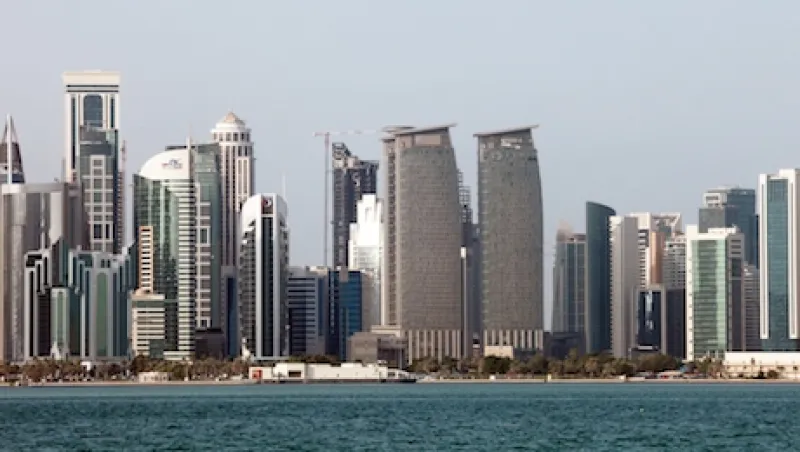The recent upsurge in investor interest in the equity markets of three member nations of the Cooperation Council for the Arab States of the Gulf, also known as the Gulf Cooperation Council (GCC) — Qatar, Saudi Arabia and the United Arab Emirates — owes its origins to the 2010 blossoming of the Arab Spring. The falling-dominoes wave of protest against incumbent governments across the Arab world, which outright toppled regimes in Egypt, Libya, Tunisia and Yemen and sparked widespread political protests elsewhere in the region, prompted the ruling families of Gulf nations to put more money in their citizens’ pockets and increase spending on big public projects with the hopes of staving off further political discontent. By boosting expectations of corporate earnings, these developments have sent some stock markets surging. The Qatar exchange index, for example, was up 55.49 percent on the year, at 12,550.98, through April 17.
In many countries, such largesse could be dismissed as unsustainable — and hence irresponsible — populism. But in Qatar, Saudi Arabia and the UAE, high fiscal surpluses based on strong oil revenues have made such spending completely sustainable.
“One of the main attractions of Gulf equity markets is the increased spending by governments after the Arab Spring, against a backdrop of high surpluses,” says Afa Boran, head of asset management and the manager of the 29.1 million Qatari riyal ($7.99 million) Qatar Gate Fund at Amwal, a Doha-based investment company. “Governments have significantly higher revenues, and are giving more to their citizens,” he adds. “Governments are also investing large amounts in infrastructure, including railways, hospitals and shopping malls.”
It is hard to find a sector that has not benefited from this spending, and it is hard to find other markets around the world that are expanding as fast. “The Gulf has had one of the fastest-growing consumer markets in the world over the last three years,” says Julie Dickson, head of portfolio client management, equities, at Ashmore, the U.K. emerging-markets specialist investment firm with assets under management of $70 billion. It is, she says, largely for this reason that Ashmore is prepared to employ a strategy of “significant off-benchmark exposures to specific companies within the region.”
Success breeds success. Index provider MSCI upgraded Qatar and the UAE from the frontier-markets index to the emerging-markets index, effective next month, because of the increasing size and trading volume of their markets. Other markets in the region are regarded by some investors as emerging in reality, even if not in formal terms. “The daily liquidity of Gulf markets has doubled or tripled over the past year, as they achieve emerging status,” says Dickson. This reassures those investors who might worry about the difficulty of exiting positions in these markets should they need the money quickly.
According to figures from the CIA World Factbook, Qatar, with a estimated 2013 per capita gross domestic product in purchasing power parity of $102,100, is the world’s wealthiest country. The tiny, peninsular sheikhdom, well known as the headquarters of satellite television network al-Jazeera, illustrates these trends to an extreme degree. In the wake of the Arab Spring, the government ramped up salaries for public sector employees, who account for the majority of employed Qatari citizens. This included a generous increase in salaries for the army.
Qatar is also building on a monumental scale. It plans to spend $240 billion on construction until 2022, when the FIFA World Cup is played in the country, according to Nicholas Wilson, chair of Qatar Investment Fund, a closed-end investment fund listed in London with net assets of $222 million invested primarily in the Qatari stock market. This works out to about $120,000 per citizen. The most ambitious project is a new, planned city called Lusail, with a goal population of some 260,000. To be located on the coast, the future city is slotted to host the 2022 FIFA World Cup opening and final matches. Despite all of this government spending, the country is maintaining an oil-backed budget surplus, equivalent to roughly 15 percent of GDP. This macro buffer adds to Qatar’s appeal for investors.
The rise in personal spending in the GCC region has spurred investor interest in Gulf consumer stocks. Boran recommends Saudi telecommunications company Mobily. Analysts also point to the region’s banks as a solid investment that is a rough proxy for the region’s economic growth. For example, the economy of Qatar is estimated to have grown by about 6 percent last year. Wilson favors Qatar National Bank, the largest financial institution in the country and in the Middle East–North Africa (MENA) region, because of its broad exposure to the Qatari economy. He also likes the bank’s rigorous avoidance of anything highly speculative, including risky lending to the property sector.
Some investors are wary of investing in property stocks, despite the region’s building boom. Amwal’s Boran cites the absence of the key driver of soaring property values in global gateway cities such as London and New York: the scarcity of land. To anyone considering investing in property stocks in the region, he suggests a survey of the area by air. “If you ever take a plane, you will see the large expanse of sand,” he says. “About 10 percent of the Gulf is built up. This makes us cautious about property.”
Investors acknowledge that all sectors of Gulf equity markets are ultimately dependent on the vast reserves of oil that lie beneath its sands as well as offshore, in the Persian Gulf. Despite some diversification into real estate assets, the region’s oil and gas reserves remain the primary economic driver.
Investors say that the value of oil would have to fall sharply to throw the Gulf economies into disarray. The Qatari government, for example, bases its annual budget on a conservative estimate of $65 a barrel, well below the current $109 price for Brent crude. Boran estimates that a 20 percent drop in the price of oil would not cause a problem for Gulf states, but a 40 percent fall would force some governments to backtrack on increases in spending, reducing the fiscal boost that has lifted local equity markets.
Boran thinks, however, that oil prices will remain high because of limited supply, high demand and the high cost of extracting oil from shale. Buying into Gulf markets remains a play on oil prices. Oil bears are likely to look elsewhere when filling up their equity allocations.
Get more on equities and on emerging markets.






